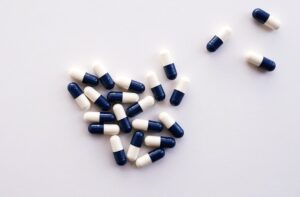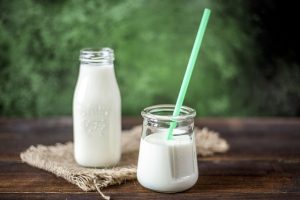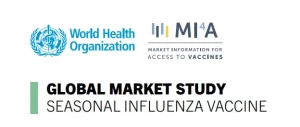AI Accelerates Deep Brain Stimulation for Treatment-Resistant Depression
- Why Lecanemab’s Adoption Faces an Uphill Battle in US?
- Yogurt and High LDL Cholesterol: Can You Still Enjoy It?
- WHO Releases Global Influenza Vaccine Market Study in 2024
- HIV Infections Linked to Unlicensed Spa’s Vampire Facial Treatments
- A Single US$2.15-Million Injection to Block 90% of Cancer Cell Formation
- WIV: Prevention of New Disease X and Investigation of the Origin of COVID-19
AI Accelerates Deep Brain Stimulation for Treatment-Resistant Depression
- Red Yeast Rice Scare Grips Japan: Over 114 Hospitalized and 5 Deaths
- Long COVID Brain Fog: Blood-Brain Barrier Damage and Persistent Inflammation
- FDA has mandated a top-level black box warning for all marketed CAR-T therapies
- Can people with high blood pressure eat peanuts?
- What is the difference between dopamine and dobutamine?
- How long can the patient live after heart stent surgery?
“Nature”: AI Accelerates Deep Brain Stimulation for Treatment-Resistant Depression, Enhancing Treatment Strategies and Predicting Relapse Early
Despite the widespread use of antidepressant medications and the availability of various options, approximately 20-30% of individuals with depression do not respond to two or more antidepressants or experience poor treatment outcomes [1-3].
For these individuals with treatment-resistant depression, deep brain stimulation (DBS) of the subcallosal cingulate gyrus (SCC) is emerging as a promising treatment, with most patients showing a positive response to sustained stimulation and long-lasting symptom relief [4,5].
However, managing these patients clinically is often complex, as their disease progression is nonlinear and highly individualized.
Due to the absence of objective biomarkers to assess the severity of depression, clinicians typically rely on subjective measures such as interviews and symptom scales like the Hamilton Depression Rating Scale (HDRS) to quantify depression severity, which may be influenced by subjective recall bias and environmental factors.
Therefore, having objective biomarkers that reflect changes in the brain following DBS treatment is crucial for standardizing treatments, tracking patient responses, and making necessary adjustments as needed.
On Nature published on Sep 21, a research team from the Icahn School of Medicine at Mount Sinai and the Georgia Institute of Technology presents their latest findings [6].
They conducted a small-scale clinical study involving ten individuals with treatment-resistant depression who underwent six months of DBS treatment. AI tools were used to analyze the participants’ brain data, identifying specific local field potential changes in the SCC that could represent the patient’s current clinical state. Using these markers, they successfully differentiated between depression and stable states, and in a validation trial, this approach predicted relapse in patients up to four weeks before it occurred.

The ten participants in the study had baseline Hamilton Depression Rating Scale (HDRS-17) scores of ≥20. Following electrode implantation and four weeks of stimulation, the average HDRS-17 score decreased from 22.3 at baseline to 7.3 at 24 weeks. At the individual level, nine participants responded to treatment (HDRS-17 score reduction >50%), with seven achieving remission (HDRS-17 score <8). Participants exhibited distinct response trajectories, demonstrating the expected heterogeneity.
Six participants provided electrophysiological data for subsequent analysis, with five showing typical response patterns—slow HDRS-17 score reduction in weeks 1-4 followed by rapid reduction in weeks 21-24. Four of these participants achieved remission at 24 weeks. Similar trends were observed using the Montgomery-Åsberg Depression Rating Scale.

Changes in HDRS-17 scores of 10 subjects after receiving DBS
The researchers extracted spectral features of local field potentials (LFP) from five typical responders to differentiate between depression and stable response states, and they built a neural network classifier for this purpose. The area under the receiver operating characteristic curve (AUROC) for these participants was 0.87±0.09, with one participant left for cross-validation.
The researchers also trained an explainable AI to identify spectral discriminant components (SDC), low-dimensional latent representations of spectral features that capture differences between depression and stable response states determined by the neural network classifier. Consequently, SDC served as markers of LFP, with higher values tending toward depression and lower values toward stable response states.
The researchers calculated SDC during the middle phase (weeks 5-20) to estimate the trajectory of patients’ LFP from depression to stable response states. Based on AUROC results, SDC estimates of depression duration highly overlapped with HDRS assessments (AUROC=0.94±0.036), indicating that SDC could significantly and reliably capture patients’ depressive states.

SDC change trajectories of 5 typical responding subjects
To validate the utility of SDC in a clinical setting, the researchers retrospectively analyzed LFP data from one participant left for cross-validation. This participant began receiving stimulation in a remission state (HDRS-17 score <8) after electrode implantation, with stable or slightly decreasing scores for the first four weeks. Depression suddenly relapsed and worsened from week 4 onwards, leading to confirmed non-response at week 16. Corresponding SDC changes confirmed non-response four weeks in advance.

Cross-validation of depression development in subjects based on HDRS-17 (blue) and SDC (red) recordings
This suggests that brain biomarkers can predict impending depressive states, facilitating early intervention before prominent clinical symptoms emerge.
The researchers also used their AI tools to analyze changes in participants’ facial expressions during video interactions with doctors. In clinical practice, facial expressions of depressed individuals often reflect the severity of depressive symptoms, and psychiatrists may document these changes during routine clinical assessments. The analysis revealed that participants’ facial expression patterns aligned with the transition from depression to stable response following DBS treatment. This could serve as an additional assessment tool and a new behavioral biomarker for evaluating DBS treatment effectiveness, although larger-scale analyses are needed to validate and refine this finding.
In summary, this study identifies brain activity pattern biomarkers for evaluating the effectiveness of DBS treatment in individuals with treatment-resistant depression. These biomarkers facilitate an objective assessment of patient responses to DBS treatment, marking a significant advancement in translating experimental therapies into clinical practice.
The research team is currently continuing their validation of these findings in a second batch of patients receiving DBS treatment within the Mount Sinai Health System. Their future research will further explore the antidepressant effects of DBS and investigate the neurological basis of emotional changes using next-generation devices.
AI Accelerates Deep Brain Stimulation for Treatment-Resistant Depression
References:
[1] Knoth R L, Bolge S C, Kim E, et al. Effect of inadequate response to treatment in patients with depression[J]. The American journal of managed care, 2010, 16(8): e188-96.
[2] Rush A J, Trivedi M H, Wisniewski S R, et al. Acute and longer-term outcomes in depressed outpatients requiring one or several treatment steps: a STAR* D report[J]. American Journal of Psychiatry, 2006, 163(11): 1905-1917.
[3] Yrondi A, Bennabi D, Haffen E, et al. Significant need for a French network of Expert Centers Enabling a Better Characterization and Management of treatment-resistant depression (Fondation FondaMental)[J]. Frontiers in Psychiatry, 2017, 8: 244.
[4] Puigdemont D, Pérez-Egea R, Portella M J, et al. Deep brain stimulation of the subcallosal cingulate gyrus: Further evidence in treatment-resistant major depression[J]. International Journal of Neuropsychopharmacology, 2012, 15(1): 121-133.
[5] Lozano A M, Mayberg H S, Giacobbe P, et al. Subcallosal cingulate gyrus deep brain stimulation for treatment-resistant depression[J]. Biological psychiatry, 2008, 64(6): 461-467.
[6] Alagapan, S., Choi, K.S., Heisig, S. et al. Cingulate dynamics track depression recovery with deep brain stimulation. Nature (2023). https://doi.org/10.1038/s41586-023-06541-3
(source:internet, reference only)
Disclaimer of medicaltrend.org
Important Note: The information provided is for informational purposes only and should not be considered as medical advice.



